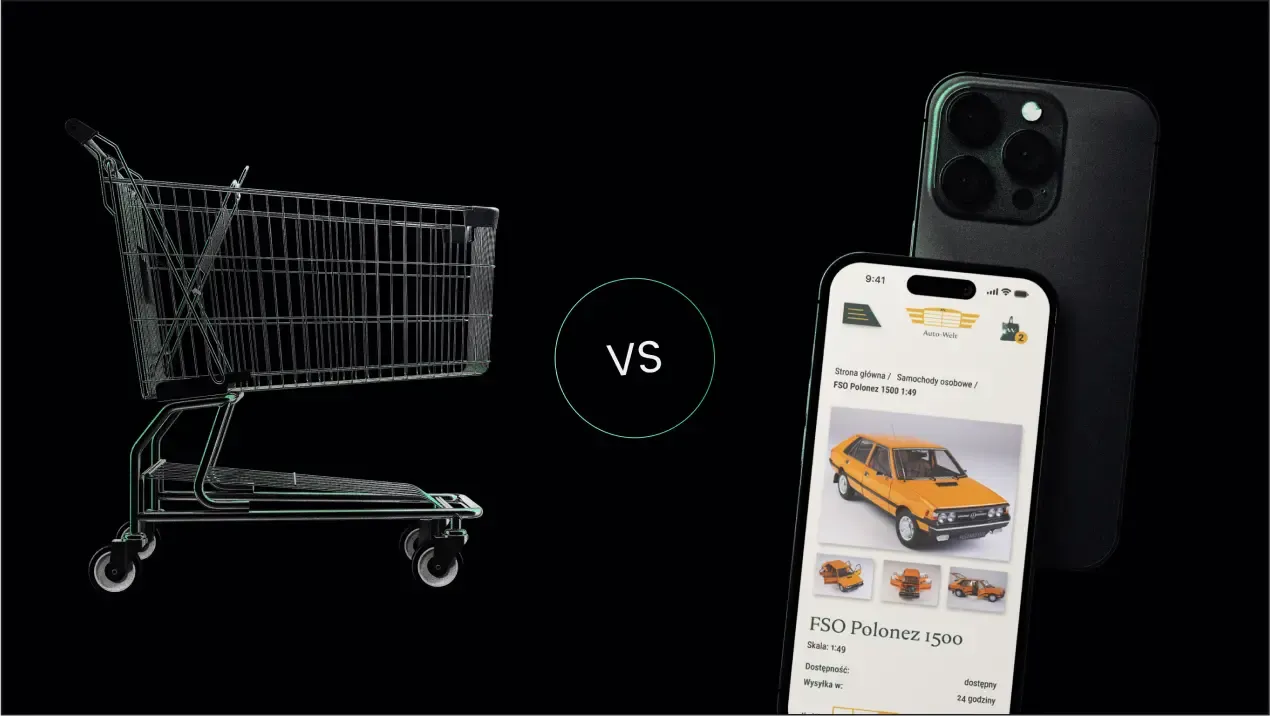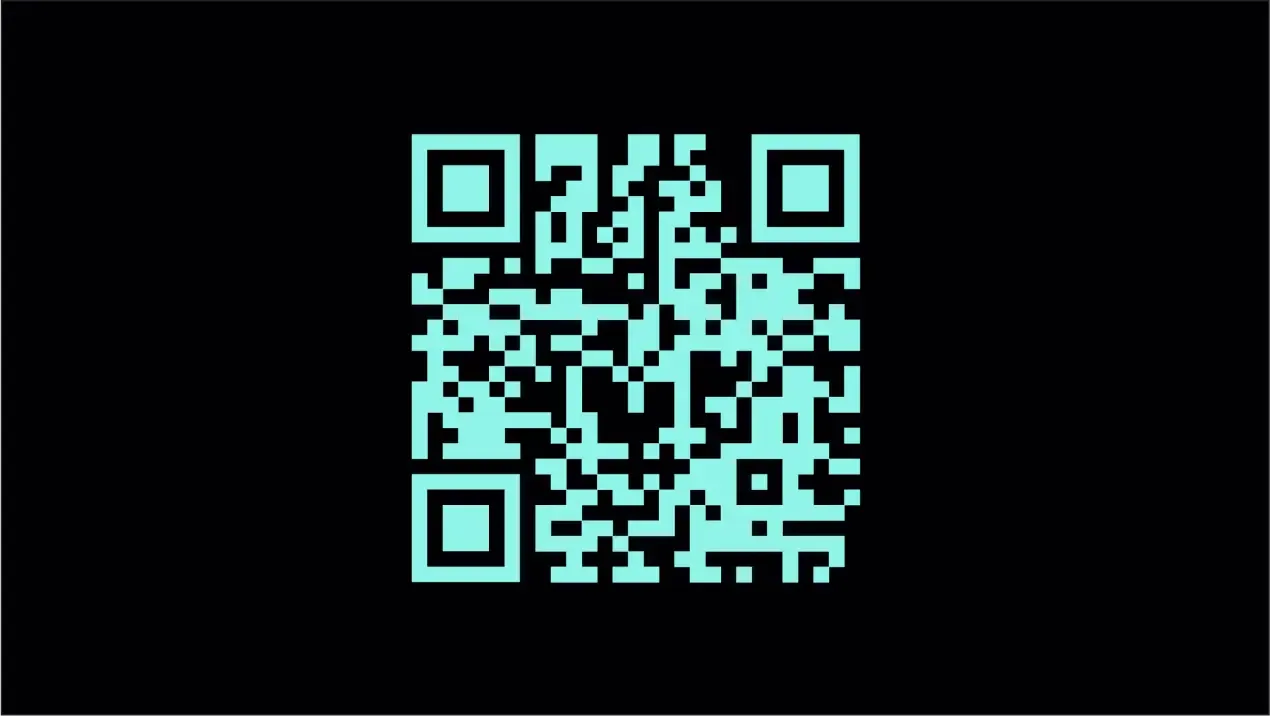❧ E-commerce Is Evolving
We can now distinguish q-commerce, m-commerce, or even re-commerce.
Heard those names and thought: “eee, Macarena?” 🕺 Don’t worry! We’ve put together an article explaining the differences between the main e-commerce models.

❧ Traditional Online Shopping or the Future of E-commerce? What Are the Main Types?
E-commerce is one of the fastest-growing, tech-driven industries.
The models of online trade keep shifting to meet user needs and preferences—which themselves never stop changing. The conclusion? E-commerce has no choice but to keep up with the times…
And that’s exactly what’s happening! Lifestyle shifts, technological adoption, and consumer expectations have given rise to new forms of e-commerce.
The transition from desktop to mobile devices triggered the rise of m-commerce. Growing environmental awareness? Enter re-commerce. The fast pace of modern life, the convenience of shopping on demand, and the global pandemic all fueled the boom in instant shopping—better known as q-commerce.
Let’s take a closer look at a few of the most popular e-commerce business models.

❧ What is M-commerce (Mobile Commerce)?
This model emerged as a direct response to the explosion of mobile devices. M-commerce allows consumers to shop via smartphones and tablets—anywhere, anytime.
It’s a blessing for frequent travelers and just as valuable for those who would rather stay home. Why battle the crowds when you can order everything from your couch? 🛋️
Responsiveness is the foundation of m-commerce. Sales platforms must adapt to small touchscreens to remain usable. A clunky checkout flow or an impossible-to-tap checkbox? That’s all it takes for a shopper to head straight to a competitor who offers the same assortment—minus the frustration 😉
Many online retailers now provide mobile apps for seamless, fast purchases. As more people rely on phones over laptops, m-commerce is becoming a dominant force in the e-commerce landscape.

❧ What on Earth is Q-commerce (Quick Commerce)?
Think fast online shopping with ultra-quick delivery. Q-commerce uses QR (Quick Response) technology to speed up digital transactions.
Here’s how it works: scan a product’s QR code with your phone, and you’re instantly redirected to the retailer’s site. It makes shopping nearly effortless.
Given the ubiquity of smartphones, q-commerce is booming in Asia, but large retailers worldwide are adopting it, too. You’ll often see it in brick-and-mortar stores for pickup orders or to quickly check stock availability online.

❧ Dark Stores – The “Invisible” Business Model
So, what exactly are dark stores? Despite the ominous name, there’s nothing shady about them. These are retail outlets that exist only as distribution hubs for online orders.
The benefit? They eliminate many of the availability issues common in physical shops. With consumer demand for fast delivery surging, dark stores are becoming an essential link in the e-commerce supply chain.

❧ Re-commerce (Reverse Commerce)
Re-commerce is about reselling used or refurbished items through platforms like eBay or Craigslist. The idea: cut down waste, extend product lifecycles, and reduce environmental impact. Electronics, fashion, furniture—you name it, if it can be reused, it’s part of re-commerce.
For consumers, it’s a budget-friendly option: second-hand items are typically far cheaper than new ones. On the business side, it promotes a more circular economy where products get reused instead of discarded.
That’s why big names like H&M and Patagonia have launched re-commerce initiatives, encouraging eco-friendly purchasing and shrinking their environmental footprint.
❧ Key Traits of E-commerce Business Models
Across all online shopping models, two things matter most: delivery time and product availability.
Both directly shape customer experience. Given the choice, most shoppers will pay extra for next-day delivery 😉 Flexibility, convenience, and options like buy-now-pay-later make e-commerce attractive across all demographics.
❧ What Is E-commerce? Online Selling Defined
- Seamless sale of products and services online
- Fast, simple shopping from home
- 24/7 availability
- Time and money savings
- Rapid market growth
- Higher quality goods
- Wider product accessibility
- More competition
- Growing consumer trust in online shopping
❧ Q-commerce – Fast and Effortless Online Shopping via Quick Response Tech
- Instant checkout and delivery
- Shorter transaction times
- Hassle-free customer service
- Rising consumer demand for online services
- Increasing expectations around quality and availability
- Fierce market competition
❧ M-commerce – Shopping via Mobile Devices
- Shop anytime, anywhere
- Real-time access to goods and services
- Quick and convenient order processing
- Integration with apps and services
- Rising popularity of mobile shopping
- Growing consumer expectations for mobile UX
- Intensifying competition
❧ What to Keep in Mind About E-commerce Platforms
There are several aspects worth paying close attention to:
-
User Experience (UX)
Want happy customers? Design your store to be intuitive, smooth, and enjoyable to use.
-
Data Security
Protecting user data is key to building trust. Apply safeguards like password management policies, input sanitation, and end-to-end encryption.
-
Marketing & SEO
Strong SEO and marketing strategies are vital to get your store visible in search results and attract traffic.
-
Product Availability
A wide assortment drives sales, but equally important is helping customers quickly find what they came for 😉
For q-commerce and m-commerce specifically, keep in mind:
-
Speed & Convenience
Time is money. Shopping should feel as refreshing as sipping a cold soda on a hot day—quick and enjoyable 😁
-
Responsiveness
With so many people shopping on their phones, your store must be mobile-friendly.
-
24/7 Access
M-commerce means shopping anytime, anywhere. Make sure your store is always open.
-
User Reviews
Especially crucial for second-hand products. Positive feedback builds buyer confidence.
-
Purchase Security
Protect user data, your app, and the checkout process itself. In today’s privacy-conscious world, this is non-negotiable.
❧ What Does the Future Hold for E-commerce Trends?
The market is evolving at lightning speed, bringing fresh innovations to make shopping easier and more engaging.
Which trends will dominate in the near future? Personalization and immersive shopping powered by VR and AR are strong contenders. Mobile commerce will keep rising as smartphones become the go-to device for online shopping.
Sustainability will also play a major role. More and more shoppers are looking for eco-certified products and brands committed to protecting the planet.
To stay competitive, e-commerce businesses must constantly track trends, adopt new technologies, and embrace tools like AI and chatbots.

